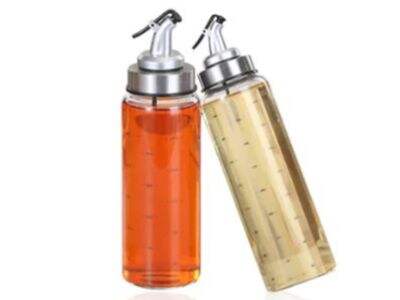One of the best ways to make tasty food is cooking oil and sometimes we do not know it that which one we should use. Australia has a lot of cooking oils and bottles good so to know which one squire. In this article, we have covered the sounds of different variants like cooking oils because you can easily buy oil bottles online or from a local store next to your place; whether its new materials making up the bottle is safe for environment “Eco-friendly,” and what looks good practical. tips relevant to maintain flavor consistency in fine culinary experiences using starting tools every now and then Or Else running late doing dishes before into Meal preparations where not everybody goes through dirty rooms while waiting around calling out,'Hello any|anyone know whence some recipes at most.

Different Types of Cooking Oils Explained
They say there are thousands of cooking oils and gosh it is true. There are oils better suited for frying (high heat oil) — something with a neutral flavor that can get nice and crispy while adding brown color to the final dish — instead of sautéing vegetables or making pasta (low-ish high smoke point). Different oils have different uses, so they are not all the same. So, some of the other cooking preferred oils glerolíuflaska by a lot of humans generally are olive oil, coconut oil, sunflower and canola. The type of oil you pick will also depend on how you plan to cook and what foods taste best to your palette. you may also simply search for natural oils in that they are free from all the additives, or healthy fats to your body.
Types of Oil Bottles Materials
Oil bottles by Jianmei are available in plastic, glass or metal. Every material has its own properties. Plastic Plastic is lightweight, cheap to produce and easy to carry from A to B but often not as long-lasting as glass or metal. Even though glass bottles are excellent to encourage the glerolíuílát stay fresh, they can be heavy and more likely to break if you do drop them. When it comes to strength, nothing is going to outdo metal bottles (i. e., stainless steel) — those suckers are practically tanks, but they tend toward the price and heavy. Before choosing a oil bottle, you should consider how much money to buying and what your needs are for the function under which you will be cooking.
Practicality vs. Aesthetics
Pretty and useful oil bottle. While some bottles are hollowed out to handle the stress of pouring, others exist just for that organic curvature on your kitchen shelf. And, say all those scenarios happen in a variety of different sizes and shapes: small spout for pouring out just enough to do its work (bottle guess), big spout for bigger cooking needs that require larger drops. A cool-looking or uniquely designed bottle may be nice aesthetically, but it might not pour as well. And when you select an oil bottle, good performance is as crucial as the way it looks in your kitchen. But finding that perfect balance makes cooking so much more fun.
Að velja umhverfisvæna valkosti
Definitely put some thought into how your oil bottle will impact the planet. Plastic is a bad material for packaging to use as it harm the environment and goes into landfills, take up too much space. There are better alternatives, such as a glass or metal bottle that will save any type of waste on the planet. This typically also means these options are more sustainable, and kinder to the planet in general. So, hunt for the bottles that can be reused a number of times or else recycled once you have used up your contents. Help our planet while enjoying your cooking by going eco-friendly.
How to Keep your Cooking Oil Fresh
However, once you choose your bottle of cooking oil – a really fundamental step – it’s important to know how the containers can be handled and maintained in order that you get 100% out of its flavor. Here are some helpful tips:
Keep your cooking oil in a cool dark place to protect from exposure of light and heat that can easily spoil the glerflöskur með loki oil if not used properly.
Wipe the bottle down regularly and prevent oil from collecting on it, where it can attract dirt or become sticky or difficult to pour.
Never mix oils of different types in the same bottle as this can alter and spoil tastes. you are keeping the flavors very straight forward and clean because you're using two separate bottles.

 EN
EN







































/images/share.png)





